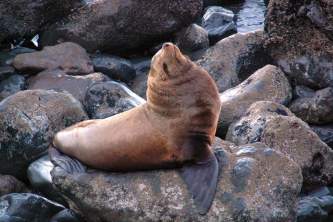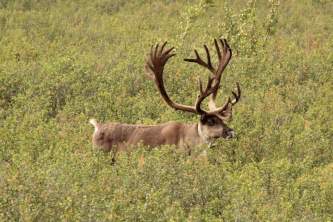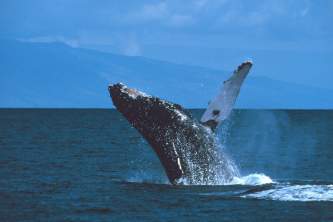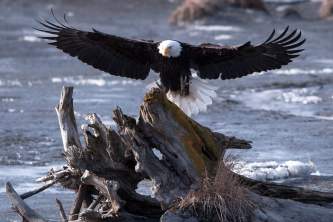Alaska Bear Safety
Avoid Bear Conflicts when Fishing
Bears love fish even more than you do. If you make it so that bears can take your fish, they further associate people with food—which is bad for both people and bears. Remember these safety basics when fishing Alaska's rivers:
- Be aware of your surroundings. Fish only in areas where you have a good range of vision and can see an approaching bear.
- Don't leave your lunch or any food out where a bear can smell it. The same goes for your catch. Put it in a bear-proof container or your car as soon as possible. Don't leave it out—-bears will find it!
- Don't leave fish carcasses lying around. If you can't store them in an airtight container, throw them back into fast-moving water.
- If a bear walks into your fishing zone, cut your line. Give him a wide berth, or calmly pack your things and back away.
Looking for local advice?
The staff at 6th Avenue Outfitters is happy to show you how to use bear spray and travel safely in bear country.
Avoid Bear Conflicts when Hiking and Camping
It's exciting to see a bear from afar in Alaska—but not one rifling through your lunch or tent. Here's how to avoid bear conflicts:
- Don't set up camp next to a trail or close to a riverbank—these are bears' highways.
- Stay with other people—safety in numbers
- Keep your food away from your tent. Keep it 100 yards away if you can. Use bear-proof containers.
- When hiking, make noise: talking, singing, clapping—especially if you are going through brush. Bears hate to be startled.
- If you smell a carcass when hiking, steer clear. Dead animals are bear magnets, and they will defend their finds aggressively.
- Removing Garbage. If staying in a campground, take your garbage to the bear-proof garbage containers each night. Do not leave it laying around camp. If backpacking, pack out what you pack in.
Avoid Bear Conflicts when Hunting
A fresh kill is irresistible to any bear that might be passing by. Here's how to keep him away:
- Don't hunt alone—there's safety in numbers.
- Move your kill into an open clearing, if you can't pack it out all at once.
- Don't cut into the gut, to cut down on tempting smells.
- Make piles. If it takes more than one trip to pack out your kill, make two piles: one for the guts and one for the main carcass. Flag your piles so other hunters can spot them from afar.
- Know the laws: You can legally shoot a bear if it is threatening your own life, but not if it is just taking your kill. Any portion of a kill that a bear takes from you still counts toward your bag limit, too.
- Back at your camp, keep any bloody clothes or materials far from your tent
Avoid Bear Conflicts when Bear Viewing
Bear viewing is NOT a dangerous activity—at least, not when done correctly. Stick with the guides and tour companies we list, since they know bears well and will always be there to direct you and handle any situation that may arise.
- If you encounter a bear, stand your ground, even if it approaches. Never run from a bear, as the action may encourage it to chase you. If it's not approaching, back away slowly and give the bear space and access to its fishing hole and trails.
- Never offer a bear food or let one take food from you.
- Keep your personal belongings with you.
- Use binoculars and telephoto lenses. Don't stalk bears or try to get up close to them.
- Stay on the trail or roadway and remain in close groups.
- Never try to attract a bear's attention with food or loud noises.
Bear Viewing Insights From a Pro
Be a neutral part of the environment, says Alaska's foremost bear biologist, Larry Aumiller. The goal is for them to become habituated to humans. Bears normally flee when they see people. But in some of Alaska's most popular bear-viewing areas, bears have learned humans aren't a problem, so they come back year after year. And cubs take cues from their parents, which means that if humans behave responsibly, generations of bears will return to the same spots for years of bear-viewing opportunities.
Some bears are more tolerant than others, but every bear has a "personal space" within which it feels threatened. Watching and photographing bears from a distance allows you to observe natural behavior, while both you and the bears feel safe.
Reduce disturbance to bears and their habitats. Respect bears' personal space and make sure they experience predictable human behavior.
Pick a spot near the action and let the bears come to you. If they make the decision and they're comfortable being close to humans, that makes us all the more comfortable.




